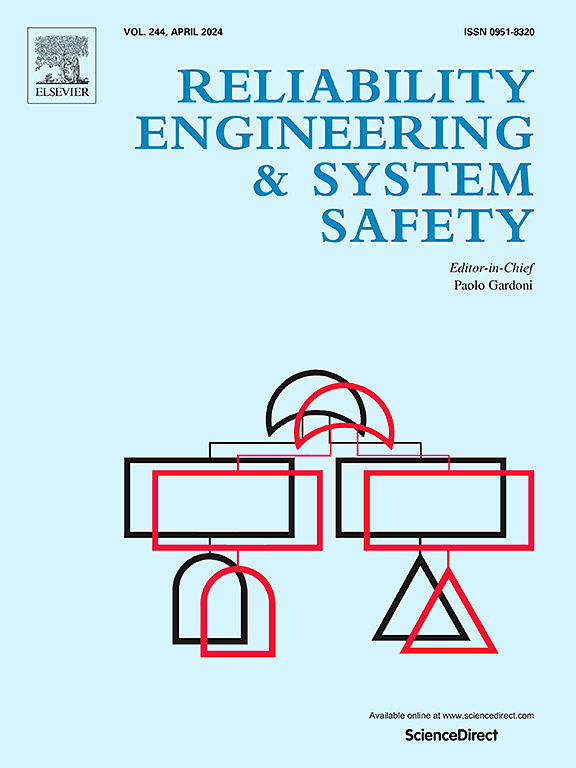Critical node identification of dynamic-load wireless sensor networks for cascading failure protection
IF 9.4
1区 工程技术
Q1 ENGINEERING, INDUSTRIAL
引用次数: 0
Abstract
Wireless Sensor Networks (WSNs), as complex and dynamic systems, are highly susceptible to cascading failures. To enhance network resilience, this study addresses the identification of critical nodes that drive failure propagation. Unlike prior studies that often ignore the impact of varying network load, we highlight that node importance can change significantly under dynamic load conditions. To tackle this, we introduce a method for identifying critical nodes in dynamic-load WSNs. We first construct a cascading failure model that links network load with link capacity, analyzing how fluctuations in load affect failure propagation. Building on this model, we propose an EW-TOPSIS-based node evaluation method grounded in node deletion, where the influence of each node under different load conditions is considered as distinct evaluation criteria. To verify the proposed method, we conduct simulations of low-rate underwater WSNs in ns-3 under dynamic load conditions. Results show that, as an attack node selection strategy, our method achieves up to 30% and 25% greater degradation in failure severity and PDR, respectively, across varying network topology, densities and traffic conditions, compared to five baseline techniques. This work provides insights for designing effective mitigation strategies against cascading failures in resource-constrained networks.
基于级联故障保护的动态负载无线传感器网络关键节点识别
无线传感器网络作为一个复杂的动态系统,极易发生级联故障。为了增强网络弹性,本研究解决了驱动故障传播的关键节点的识别问题。与以往忽视网络负载变化影响的研究不同,我们强调节点重要性在动态负载条件下会发生显著变化。为了解决这个问题,我们引入了一种识别动态负载无线传感器网络中关键节点的方法。首先构建了一个连接网络负荷和链路容量的级联故障模型,分析了负荷波动对故障传播的影响。在此模型的基础上,提出了一种基于节点删除的ew - topsis节点评价方法,将每个节点在不同负载条件下的影响作为不同的评价标准。为了验证所提出的方法,我们在ns-3中进行了动态负载条件下的低速率水下WSNs仿真。结果表明,作为一种攻击节点选择策略,与五种基线技术相比,我们的方法在不同的网络拓扑、密度和流量条件下,在故障严重程度和PDR方面分别实现了高达30%和25%的降低。这项工作为在资源受限的网络中设计针对级联故障的有效缓解策略提供了见解。
本文章由计算机程序翻译,如有差异,请以英文原文为准。
求助全文
约1分钟内获得全文
求助全文
来源期刊

Reliability Engineering & System Safety
管理科学-工程:工业
CiteScore
15.20
自引率
39.50%
发文量
621
审稿时长
67 days
期刊介绍:
Elsevier publishes Reliability Engineering & System Safety in association with the European Safety and Reliability Association and the Safety Engineering and Risk Analysis Division. The international journal is devoted to developing and applying methods to enhance the safety and reliability of complex technological systems, like nuclear power plants, chemical plants, hazardous waste facilities, space systems, offshore and maritime systems, transportation systems, constructed infrastructure, and manufacturing plants. The journal normally publishes only articles that involve the analysis of substantive problems related to the reliability of complex systems or present techniques and/or theoretical results that have a discernable relationship to the solution of such problems. An important aim is to balance academic material and practical applications.
 求助内容:
求助内容: 应助结果提醒方式:
应助结果提醒方式:


